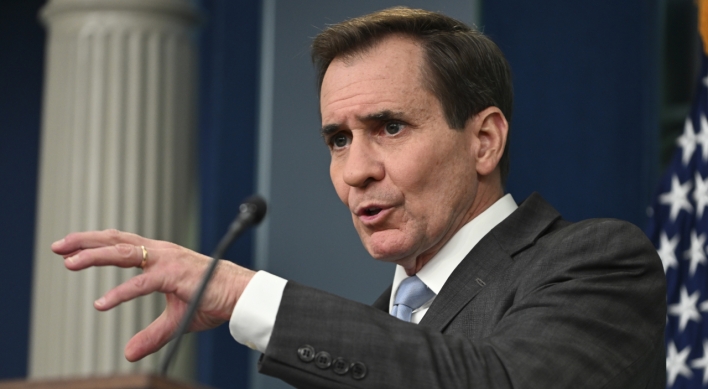Worth more than the paper they’re drawn on
Gallery Hyundai showcases paintings and drawings on paper by painting masters of modern Korean art
By Lee Woo-youngPublished : Feb. 2, 2014 - 19:35

An extensive collection of paintings and drawings on paper by acclaimed modern Korean artists is on view at Gallery Hyundai, shedding light on one of the oldest and most common art mediums ― paper.
The showcase of 132 works by 30 artists explores the significance of paper in the history of Korean art.
The exhibits were created using diverse media including pencils, inks, watercolors and painting markers throughout modern Korean art. The modern art period in Korea encompasses the Japanese colonial era (1910-1945) and the Korean War (1950-1953), through major shifts in styles and subjects.
Works on paper by modern Korean artists have largely been undervalued at local auctions compared to oil paintings on canvas. According to art critic Yoo Hong-jun, this has to do with Koreans’ perception, formed in early 1900s when modern art was born in the nation, that Western-style paintings are normally done on canvas.
Watercolors by pioneering abstract painter Kim Whanki (1913-1974) have often been sold at lower prices than his oil paintings on canvas.
Works on paper undeniably hold significance in the history of Korean modern art. Paper was the only option for artists like Lee Jung-seop (1916-1956), who couldn’t afford to buy canvas. None of his paintings were done on canvas. Even his famous “Bull” was drawn in oil on paper.
But paper was still costly and hard to find, and Lee sometimes had to resort to practicing his craft on gum wrappers.
The showcase of 132 works by 30 artists explores the significance of paper in the history of Korean art.
The exhibits were created using diverse media including pencils, inks, watercolors and painting markers throughout modern Korean art. The modern art period in Korea encompasses the Japanese colonial era (1910-1945) and the Korean War (1950-1953), through major shifts in styles and subjects.
Works on paper by modern Korean artists have largely been undervalued at local auctions compared to oil paintings on canvas. According to art critic Yoo Hong-jun, this has to do with Koreans’ perception, formed in early 1900s when modern art was born in the nation, that Western-style paintings are normally done on canvas.
Watercolors by pioneering abstract painter Kim Whanki (1913-1974) have often been sold at lower prices than his oil paintings on canvas.
Works on paper undeniably hold significance in the history of Korean modern art. Paper was the only option for artists like Lee Jung-seop (1916-1956), who couldn’t afford to buy canvas. None of his paintings were done on canvas. Even his famous “Bull” was drawn in oil on paper.
But paper was still costly and hard to find, and Lee sometimes had to resort to practicing his craft on gum wrappers.

Another well-known modern Korean artist, Park Soo-keun (1914-1965), created many pencil sketches at a time when materials were scarce. One anecdote describes the self-taught artist asking Margaret Miller, the wife of the U.S. Ambassador to Korea and avid collector of his work, to pay him with $50 of painting materials instead of cash.
Paper has also enabled many artists to create new styles. Artist Kim’s color gouache paintings on paper are praised as much as his oil canvas paintings for distinct color combinations and compositions.
Painters like Lee Ungno and Suh Se-ok tried to embody modern aesthetics in traditional Korean ink-and-wash landscape paintings on mulberry or rice paper.
Chun Kyung-ja, famous for depicting flamboyant Western styles with Oriental paints, has made an artistic venture drawing frogs and golden fish on rice paper with ink.
The exhibition runs until March 9 at Gallery Hyundai, Samcheong-ro, Jongno, Seoul. For more information, call (02) 2287-3500.
By Lee Woo-young (wylee@heraldcorp.com)
Paper has also enabled many artists to create new styles. Artist Kim’s color gouache paintings on paper are praised as much as his oil canvas paintings for distinct color combinations and compositions.
Painters like Lee Ungno and Suh Se-ok tried to embody modern aesthetics in traditional Korean ink-and-wash landscape paintings on mulberry or rice paper.
Chun Kyung-ja, famous for depicting flamboyant Western styles with Oriental paints, has made an artistic venture drawing frogs and golden fish on rice paper with ink.
The exhibition runs until March 9 at Gallery Hyundai, Samcheong-ro, Jongno, Seoul. For more information, call (02) 2287-3500.
By Lee Woo-young (wylee@heraldcorp.com)





![[Music in drama] Rekindle a love that slipped through your fingers](http://res.heraldm.com/phpwas/restmb_idxmake.php?idx=644&simg=/content/image/2024/05/01/20240501050484_0.jpg&u=20240501151646)



![[New faces of Assembly] Architect behind ‘audacious initiative’ believes in denuclearized North Korea](http://res.heraldm.com/phpwas/restmb_idxmake.php?idx=644&simg=/content/image/2024/05/01/20240501050627_0.jpg&u=20240502093000)








![[Today’s K-pop] Stray Kids go gold in US with ‘Maniac’](http://res.heraldm.com/phpwas/restmb_idxmake.php?idx=642&simg=/content/image/2024/05/02/20240502050771_0.jpg&u=)